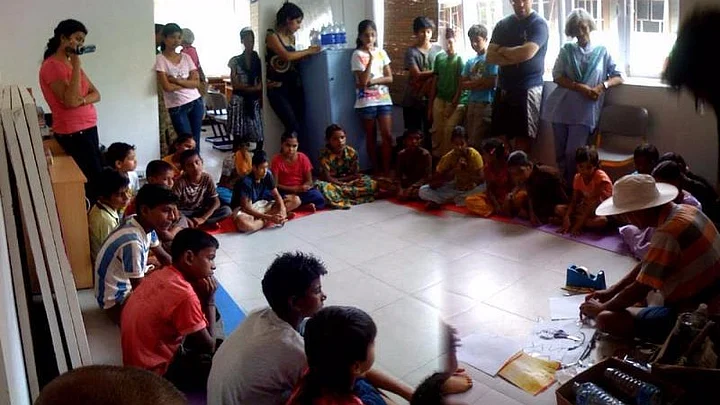Just five kilometres away from Old Goa’s World Heritage Site, a popular tourist destination, is Carambolim village. Until two years ago, the village had no toilets, forcing its 5,000-odd residents to defecate in the open.
Today, the village is home to seven dry and eco-friendly public toilets, thanks to the initiative taken by a group of children from the village, reported The Better India.
The idea to build toilets in the area came after a group of children from the village met during a ‘Bal Gram Sabha’ organised by the Mitsuko Trust, an NGO. During the meeting in Panaji, the children brainstormed ways to solve the sanitation problems of their village.
They also staged a play titled Kuthe Gele Swatch Pani, to highlight how the lack of toilets meant that the waste was seeping into, and subsequently destroying the Karmali, or Carambolim lake – which is listed as an Important Bird Area.
The Mitsuko Trust took the problem to architect Tallulah D’Silva, who realised that the construction of eco toilets would help solve the village’s problems.
D’Silva told The Better India:
As these people have small houses that are situated in narrow lanes, they do not have any sanitation facilities. They have to use the public toilet, which is very dirty and are just three or four toilets for 5,000 villagers. The ideal ratio is 1:20, which means one toilet for 20 people.Tallulah D’Silva, Architect of the toilets
The eco loo uses a mixture of saw dust, ash and lime, instead of water. The toilet uses two chambers. According to the report, once it is full, the chamber pot is left to rest for six months, during which period the waste is reduced to nutrient-rich compost. The Better India reports that the NGO has been receiving funds for implementing the eco loo model on a larger scale.
(At The Quint, we question everything. Play an active role in shaping our journalism by becoming a member today.)
